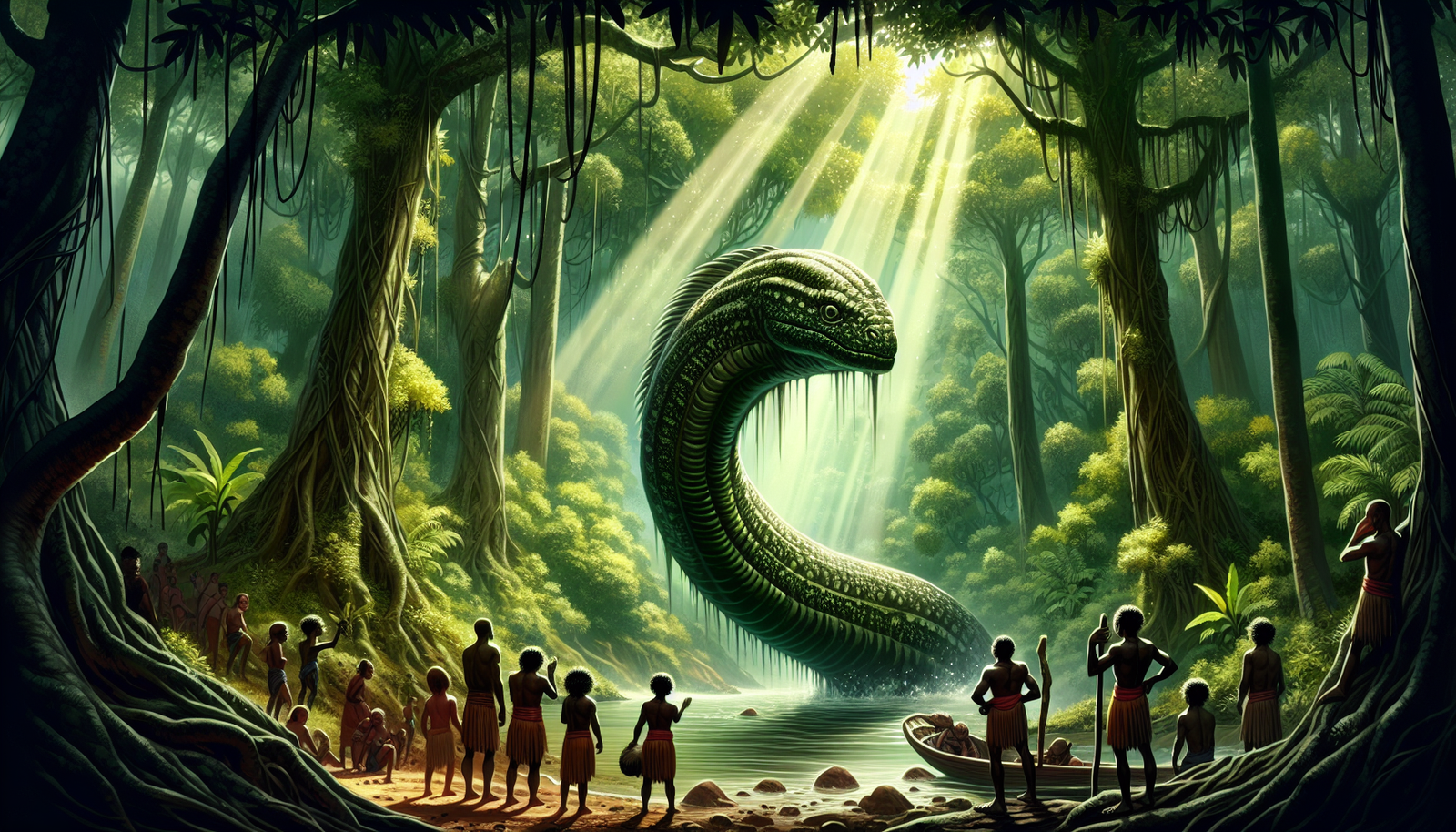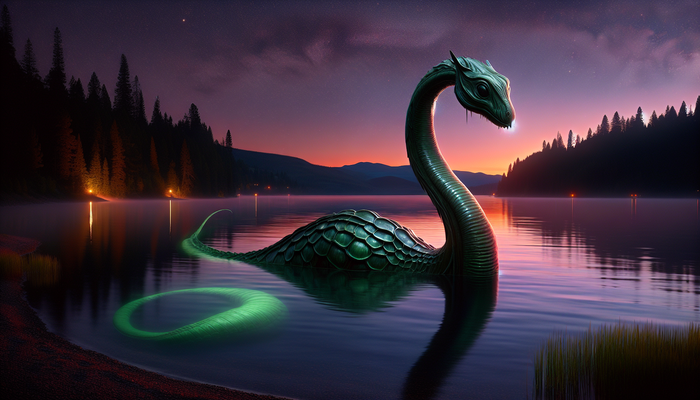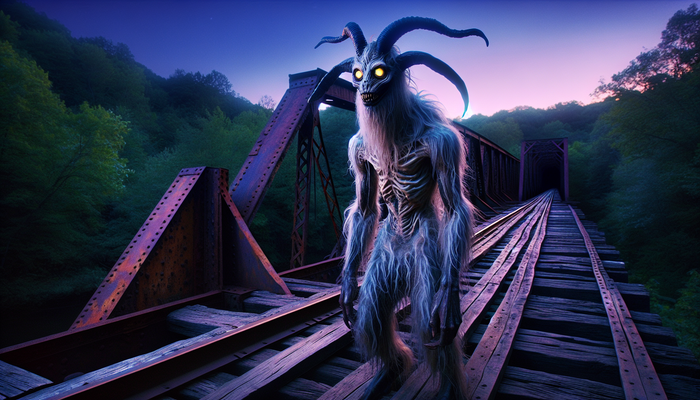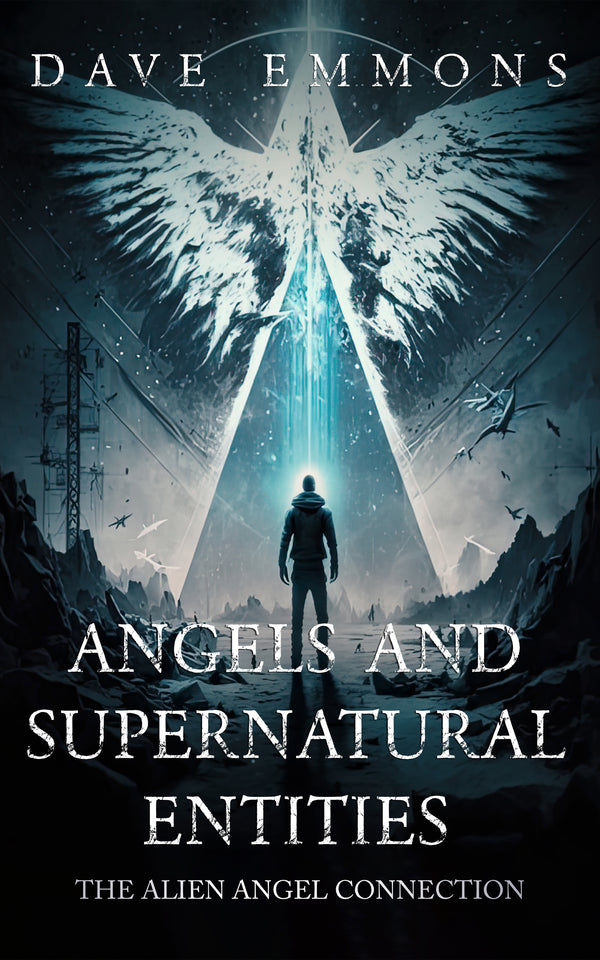Unraveling the Mysteries of Lesser Known Cryptids

By James Roberts, Cryptozoologist
There's something undeniably captivating about the world of cryptozoology. The idea that there could be creatures out there, lurking in the shadows, evading scientific classification and confirmation, sparks a sense of wonder in even the most skeptical of minds. We've all heard of the big names - Bigfoot, the Loch Ness Monster, the Chupacabra - but what about the lesser known cryptids? The ones that haven't quite made it into the mainstream consciousness, but are no less fascinating for their obscurity?
As a cryptozoologist and wilderness guide, I've made it my life's work to unravel the mysteries surrounding these elusive beasts. I've trekked through dense jungles, navigated treacherous swamps, and scoured ancient texts, all in the pursuit of knowledge about the creatures that dwell in the shadows of our world. And let me tell you, the realm of lesser known cryptids is a treasure trove waiting to be explored.
In this article, we'll delve into the enigmatic world of these obscure creatures. We'll examine eyewitness accounts, analyze historical records, and ponder the possibilities of their existence. From the dinosaur-like Mokele-mbembe of the Congo to the winged Ahool of Java, we'll embark on a journey to uncover the truth behind some of the world's most intriguing cryptozoological mysteries. So, sit back, grab your explorer's hat, and let's venture into the unknown together.
The Mokele-mbembe: A Living Dinosaur in the Congo?
Deep in the heart of central Africa, whispers of a creature that time forgot have echoed through the dense jungles of the Congo Basin for centuries. The Mokele-mbembe, a name that translates to "one who stops the flow of rivers" in the local Lingala language, is said to be a massive, sauropod-like creature with a long neck, small head, and a body that could rival the size of an elephant.
The legend of the Mokele-mbembe can be traced back to the 1800s, when French explorer Paul Belloni Du Chaillu first encountered tales of this mysterious beast during his expeditions into the Congo. The locals spoke of a creature that could uproot trees and crush canoes with ease, a fearsome predator that ruled the rivers and swamps of the region.
Over the decades, numerous eyewitness accounts have surfaced, each adding a new piece to the puzzle of the Mokele-mbembe's existence. In the 1980s, American missionary Herman Regusters led an expedition into the Congo, where he and his team claimed to have found massive footprints and even caught a glimpse of the creature emerging from the murky waters of a river.
The descriptions of the Mokele-mbembe are remarkably consistent, painting a picture of a creature that bears an uncanny resemblance to the long-extinct sauropod dinosaurs. This has led some cryptozoologists to speculate that the Mokele-mbembe could be a surviving population of these ancient giants, a relic from a bygone era that has somehow managed to evade detection in the remote reaches of the Congo.
However, despite the tantalizing eyewitness accounts and the allure of a living dinosaur in our midst, concrete evidence of the Mokele-mbembe's existence remains frustratingly elusive. Skeptics argue that the creature is more likely a result of misidentification, with known animals like elephants, hippos, or even large crocodiles being mistaken for something more fantastical.
Yet, the legend of the Mokele-mbembe persists, captivating the imaginations of cryptozoologists and adventurers alike. The idea that a creature from the distant past could still be roaming the Earth, hidden away in one of the world's most inaccessible regions, is a powerful one. It speaks to our fascination with the unknown, our desire to believe that there are still wonders waiting to be discovered in this world.
As a cryptozoologist, I can't help but be drawn to the mystery of the Mokele-mbembe. The thought of embarking on an expedition into the heart of the Congo, of potentially coming face-to-face with a living, breathing dinosaur, is the stuff of dreams. But I also approach the legend with a healthy dose of skepticism, knowing that extraordinary claims require extraordinary evidence.
Perhaps one day, the truth about the Mokele-mbembe will be revealed. Until then, the creature remains a captivating enigma, a reminder of the vast, untamed wilderness that still exists on our planet and the secrets it may hold. The Mokele-mbembe is a symbol of the enduring allure of cryptozoology, of our unquenchable thirst for discovery and our fascination with the creatures that lurk just beyond the edges of our understanding.
The Ahool: A Winged Primate in the Jungles of Java
From the swamps of the Congo, we now turn our attention to the lush, tropical forests of Indonesia, where another lesser known cryptid has captured the imagination of cryptozoologists and adventurers alike: the Ahool.
The Ahool first entered the annals of cryptozoology in the 1920s, when Dutch scientist Ernest Bartels reported a strange encounter while conducting research in the jungles of Java. Bartels described a massive, bat-like creature with a wingspan that could reach up to 12 feet, soaring through the canopy with an eerie, howling cry that would later give the creature its name.
According to Bartels and subsequent eyewitness accounts, the Ahool is no ordinary bat. Its face is said to bear a striking resemblance to that of a primate, with large, intelligent eyes and a distinctly human-like expression. This has led some researchers to speculate that the Ahool could be a previously unknown species of flying primate, a tantalizing prospect that has fueled countless expeditions into the heart of Java's jungles.
Local folklore and tales of the Ahool have been passed down through generations of indigenous peoples in the region. Some believe that the creature could be a surviving remnant of the extinct Gigantopithecus, a massive ape that once roamed the forests of Southeast Asia. The idea that a creature of such size and power could have evaded detection for so long is both thrilling and terrifying, a testament to the vast, unexplored wilderness that still exists in some of the world's most remote corners.
However, as with many cryptids, the Ahool remains a creature of mystery, its existence unconfirmed by solid scientific evidence. The dense, often impenetrable jungles of Java present a formidable challenge for researchers seeking to study and document the Ahool. The creature's elusive nature and the inhospitable terrain of its habitat have made it difficult to gather conclusive proof of its existence.
Despite these challenges, the Ahool continues to captivate the minds of cryptozoologists and adventurers. Its potential connection to other winged primate cryptids in Southeast Asia, such as the Orang-bati of Indonesia and the Ebu Gogo of Flores, has led some researchers to speculate that there could be an entire undiscovered family of these creatures lurking in the region's forests.
As a cryptozoologist, the Ahool represents a tantalizing mystery, a creature that straddles the line between the known and the unknown. The idea of a massive, flying primate soaring through the canopy of Java's jungles is the stuff of adventure novels and Hollywood blockbusters. But it's also a reminder of how much we still have to learn about the incredible diversity of life on our planet.
The search for the Ahool is not just about proving the existence of a single cryptid. It's about expanding our understanding of the natural world, of pushing the boundaries of what we think is possible. Every expedition into the jungles of Java, every eyewitness account and piece of potential evidence, brings us one step closer to unraveling the mystery of this fascinating creature.
Whether the Ahool is a genuine, undiscovered species or a product of misidentification and local folklore, its legend serves as a powerful reminder of the wonder and mystery that still exists in the world around us. As long as there are unexplored corners of the Earth, as long as there are creatures that defy our understanding, the allure of cryptozoology will endure. And the Ahool will continue to beckon to those with a thirst for adventure and a desire to uncover the secrets of the unknown.
The Dobhar-chú: Ireland's Fearsome Aquatic Cryptid
From the tropical jungles of Java, we now journey to the emerald shores of Ireland, where a fearsome aquatic cryptid has been lurking in the country's lakes and rivers for centuries: the Dobhar-chú.
The legend of the Dobhar-chú is deeply rooted in Irish folklore, with tales of this mysterious creature dating back to the 17th century. According to these ancient accounts, the Dobhar-chú is a massive, otter-like beast with a long, serpentine body and a mouthful of razor-sharp teeth. Its name, which translates to "water hound" in Irish, is a testament to its fearsome reputation and its mastery of the aquatic domain.
One of the most famous accounts of the Dobhar-chú's ferocity dates back to 1722, when a woman named Grainne Ní Mháille was reportedly attacked by the creature while washing clothes in a lake. The story goes that the Dobhar-chú emerged from the depths, savagely mauling Grainne and leaving her with deep gashes and bite marks. Her husband, who was nearby, rushed to her aid, only to be set upon by the beast himself. In a desperate act of courage, he managed to kill the Dobhar-chú with a single shot from his musket, but not before the creature had claimed his wife's life.
This chilling tale is just one of many that have been passed down through generations of Irish folklore. Sightings of the Dobhar-chú have been reported as recently as the 21st century, with eyewitnesses describing a large, otter-like creature with a long, powerful body and a face that seems to be twisted in a permanent snarl.
Some researchers have speculated that the Dobhar-chú could be related to another fearsome creature from Celtic mythology: the Cu Sith, a massive, wolf-like beast that is said to roam the highlands of Scotland. The idea that these two cryptids could be connected, perhaps as different regional variations of the same creature, is a tantalizing one that has fueled much debate and speculation among cryptozoologists.
However, as with many cryptids, the existence of the Dobhar-chú remains unproven. Skeptics argue that the creature is more likely a result of misidentification, with known animals like otters or seals being mistaken for something more monstrous. The lack of concrete physical evidence, despite centuries of sightings and encounters, has led some to dismiss the Dobhar-chú as nothing more than a product of overactive imaginations and the human tendency to mythologize the unknown.
But for those who have dedicated their lives to the study of cryptozoology, the Dobhar-chú represents something more than just another unconfirmed creature. It is a symbol of the enduring power of folklore, of the way that stories and legends can take on a life of their own and shape our understanding of the world around us.
The Dobhar-chú's fearsome reputation and its deep roots in Irish mythology make it a particularly compelling subject for cryptozoological study. The idea that a creature of such size and ferocity could have evaded detection for so long, lurking in the murky depths of Ireland's lakes and rivers, is a testament to the vast, untamed wilderness that still exists in some of the world's most ancient landscapes.
As a cryptozoologist, I am drawn to the mystery of the Dobhar-chú not just for its potential to be a genuine, undiscovered species, but for the way it reflects the rich tapestry of human storytelling and our enduring fascination with the creatures that lurk just beyond the edges of our understanding.
Whether the Dobhar-chú is a flesh-and-blood creature or a product of centuries of myth-making, its legend serves as a reminder of the incredible diversity and mystery of the natural world. It is a call to adventure, a challenge to those who would seek to unravel the secrets of the unknown and push the boundaries of what we think is possible.
As long as there are dark, unexplored corners of the world, as long as there are tales of fearsome beasts that defy explanation, the legend of the Dobhar-chú will endure. And those of us who have dedicated our lives to the pursuit of cryptozoological knowledge will continue to search for the truth behind this enigmatic creature, driven by a thirst for discovery and a deep respect for the mysteries that still lurk in the shadows of our world.
The Snallygaster: A Winged Terror in Maryland's Skies
From the murky depths of Ireland's lakes and rivers, we now turn our gaze to the skies above Maryland, where a winged terror known as the Snallygaster has been haunting the imaginations of locals for over a century.
The legend of the Snallygaster can be traced back to the early 1900s, when tales of a fearsome, bird-like creature with reptilian features began to circulate in the rural communities of central Maryland. According to these accounts, the Snallygaster was a massive beast, with a wingspan that could rival that of a small plane and a beak filled with razor-sharp teeth. Its piercing screech was said to be heard for miles around, striking fear into the hearts of all who heard it.
One of the most famous accounts of the Snallygaster's terror comes from 1909, when a group of witnesses claimed to have encountered the creature while swimming in the Patapsco River. They described a monstrous, bird-like entity with a long, slender body and a beak that could slice through flesh and bone with ease. The creature's appearance was so terrifying that it sent the swimmers fleeing in panic, their screams echoing through the surrounding hills.
Some researchers have speculated that the legend of the Snallygaster may have its roots in the tales brought over by German immigrants who settled in the region in the 18th and 19th centuries. These settlers may have brought with them stories of similar, mythical creatures from their homeland, which then evolved and adapted to the local environment and folklore.
However, despite the numerous eyewitness accounts and the enduring presence of the Snallygaster in Maryland's folklore, concrete evidence of the creature's existence remains elusive. Skeptics argue that the Snallygaster is more likely a product of misidentification, with known animals like large birds of prey or even escaped exotic pets being mistaken for something more fantastical.
But for those who have dedicated their lives to the study of cryptozoology, the Snallygaster represents a fascinating case study in the way that local legends and folklore can take on a life of their own and shape our understanding of the world around us.
The Snallygaster's unique blend of avian and reptilian features, combined with its fearsome reputation and the consistency of eyewitness accounts, has led some researchers to speculate that it could be a previously unknown species of flying predator. The idea that such a creature could have evaded scientific classification for so long, lurking in the skies above one of America's most populous states, is a testament to the vast, untamed wilderness that still exists in some of the country's most overlooked corners.
From Bigfoot to UFOs: Hangar 1 Publishing Has You Covered!
Explore Untold Stories: Venture into the world of UFOs, cryptids, Bigfoot, and beyond. Every story is a journey into the extraordinary.
Immersive Book Technology: Experience real videos, sights, and sounds within our books. Its not just reading; its an adventure.



























